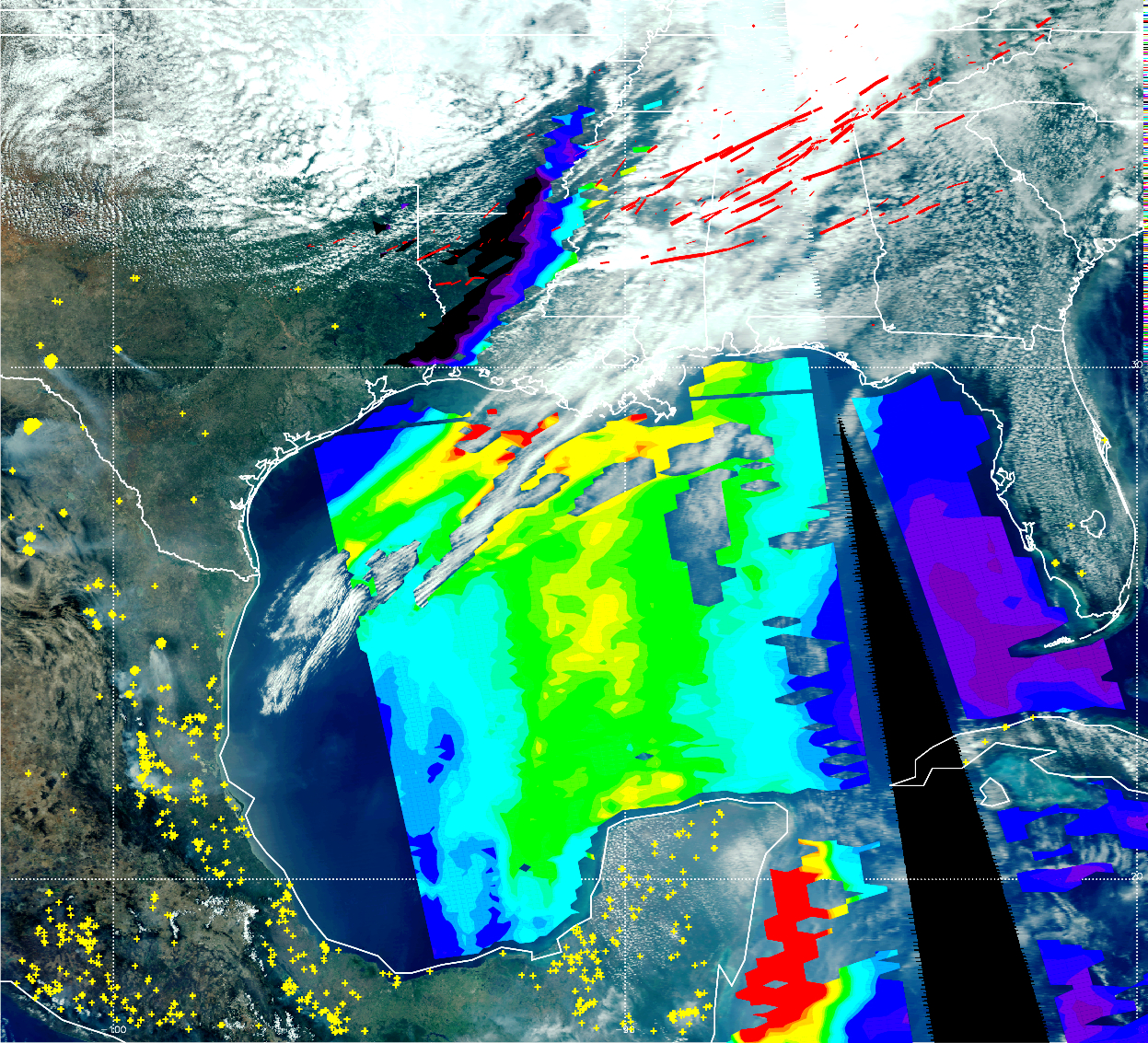Fires Intensified Deadly Tornado Outbreak

One of the deadliest tornado outbreaks in U.S. history was strengthened by smoke from burning farmlands in Central America, a new study suggests.
On April 27, 2011, some 200 terrifying twisters touched down across the Southeast — the most on record in a single day. Damages topped $11 billion, and 316 people died. (The devastation on April 27 was the worst of a four-day tornado outbreak spanning April 25 through April 28.)
The hardest hit states were Mississippi, Alabama, Tennessee and Georgia, which were struck by 15 tornadoes ranked EF-4 or higher on the Enhanced Fujita Scale. There were also four powerful EF-5 tornadoes — the highest possible tornado ranking — as severe storms raked through these states. [Destructive U.S. Tornadoes of April 2014: Gallery]
Researchers now say that air pollution intensified this incredible tornado outbreak. When supercell storms on April 27, 2011, mixed with smoke in the air, the volatile combination boosted the conditions that trigger tornados, according to a study published Jan. 26 in the journal Geophysical Research Letters.
However, the study notes that the twisters were primarily caused by the storms, not by smoke. "The smoke is not responsible for this outbreak," said Pablo Saide, lead study author and a postdoctoral researcher at the University of Iowa's Center for Global and Regional Environmental Research. "The main driver is the environmental conditions — the temperature and the wind profiles."
During the tornado outbreak, a satellite recorded high levels of smoke drifting across the Gulf of Mexico from burning fields in eastern Mexico and the Yucatan Peninsula. (Pollution from agricultural burning is also a concern in the United States, where several states have regulated the practice under the Clean Air Act of 1990.)
The pollution included soot and aerosols, which are fine particles and droplets suspended in the air. In the new study, the researchers looked at what effects these pollutants may have had on the birth of tornadoes, using a climate model. The researchers found two main effects, which required aerosols to be both close to the Earth's surface and above the cloud layer, Saide said.
Sign up for the Live Science daily newsletter now
Get the world’s most fascinating discoveries delivered straight to your inbox.
One effect was that the aerosols brightened clouds in a way that increased wind shear (vertical differences in the speed and direction of the wind) and lowered the cloud base. The second effect was that the dark soot in the smoke warmed cloud tops, just like the sun does to a dark car. This effect boosts temperature contrasts between the top and bottom of the storm clouds, making it harder for different layers of air to mix. All of these factors tend to make tornadoes stronger and more likely to develop, Saide said.
About 90 percent of the supercell storms on April 27 produced at least one tornado, compared with the typical rate of about 25 percent, according to a study published in July 2014 in the Bulletin of the American Meteorological Society.
Climate scientist James Elsner, who was not involved in the research, said the study is provocative, but he noted that some effects attributed to the pollutants could actually be independent of aerosols. "I think the increased wind shear is certainly reasonable, but cloud heights are always pretty low across Mississippi and Alabama, so that seems pretty dubious," said Elsner, a professor at Florida State University in Tallahassee who recently published a study on tornado clusters.
The researchers now plan to test their model on other historical tornado outbreaks. "Clearly, we need to know if this is more robust," said study co-author Greg Carmichael, a professor of chemical and biochemical engineering at the University of Iowa.
Testing the effects with climate models that add smoke to large-scale storm simulations could further explain how aerosols enhance tornadoes, said Victor Gensini, a severe-storms climatologist who was not involved in the study.
"This is just one case, but it could definitely be a piece of the puzzle in creating the environment that you need for a tornado," said Gensini, an assistant professor at the College of DuPage in Illinois.
Editor's note: This story was updated Feb. 5 to correct the spelling of Victor Gensini's name.
Follow Becky Oskin @beckyoskin. Follow Live Science @livescience, Facebook & Google+. Originally published on Live Science .










